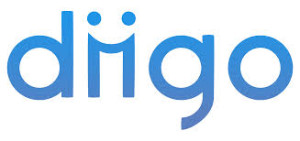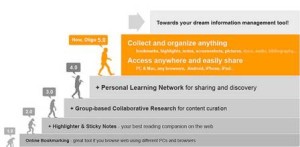Diigo Company History: Social Annotation Website
 With more and more reading taking place online, social bookmarking has become a big business in the second half of the last decade. One of the players in the field is social annotation website Diigo, which promised from the very start to offer a little extra from the crowd and to be a useful information management tool.
With more and more reading taking place online, social bookmarking has become a big business in the second half of the last decade. One of the players in the field is social annotation website Diigo, which promised from the very start to offer a little extra from the crowd and to be a useful information management tool.
Diigo launched publicly on July 24, 2006, although it had been open since 2005 in beta version. The name stands for “digest of internet information, groups and other stuff”, and for the most part the platform does what it says on the tin. Throughout the history of Diigo, it went through a number of reincarnations and each new one added an extra level of services to keep users glued to their toolbar.
Recognising del.icio.us (now Delicious.com) as a very serious if not their main competitor, Diigo offered the possibility to import bookmarks from del.icio.us, aiming to be a better version of the social bookmarking site. Indeed, the first major update to the site, Diigo 2.0, gave users the possibility to add annotations and sticky notes to webpages rather than simply saving the URL to tags or favourites. These annotations could either be private or could be shared with others, which created a helpful environment for conducting research or organising notes.
The collaborative aspect to Diigo’s tools was further built upon in the next reincarnation, Diigo 3.0, which had as a main purpose the creation and support of a research community, as well as a focus on content curation. The platform was already doing quite well in the research segment by now, having been featured on CNET’s list of ten best research tools back in 2006, when it was still in beta.
In 2009, Diigo bought Furl from LookSmart, a move some commentators saw as a way to get control over a platform that offered very similar services. Furl, which started out in 2003, offered users tools to clip and archive webpages, but had only attracted around one million users throughout the years. Diigo acquired it in exchange for equity, which seemed like a convenient arrangement for both sides as it gave LookSmart a way out from a project that never quite matched the rest of their portfolio.
 The next update saw Diigo transform itself into a personal learning network, while the newest version, Diigo 5.0, allowed users to annotate photos, screenshots, and write personal memos. Diigo Power Note for Android was launched at the same time, which aimed to act as a photographic memory for its users, facilitating contact storage, visual reminders, as well as supporting all previous features.
The next update saw Diigo transform itself into a personal learning network, while the newest version, Diigo 5.0, allowed users to annotate photos, screenshots, and write personal memos. Diigo Power Note for Android was launched at the same time, which aimed to act as a photographic memory for its users, facilitating contact storage, visual reminders, as well as supporting all previous features.
Diigo has three levels of membership. Free, “try out” members have access to unlimited bookmarks, but only one thousand highlights a year and 30 cached pages. The next level up, basic members, pay $20 a year for unlimited bookmarks, highlights, and text search, as well as benefit from an ad free service. Premium membership costs $40 a year and includes all of the aforementioned with extra unlimited screencaps, cached pages, and support.
